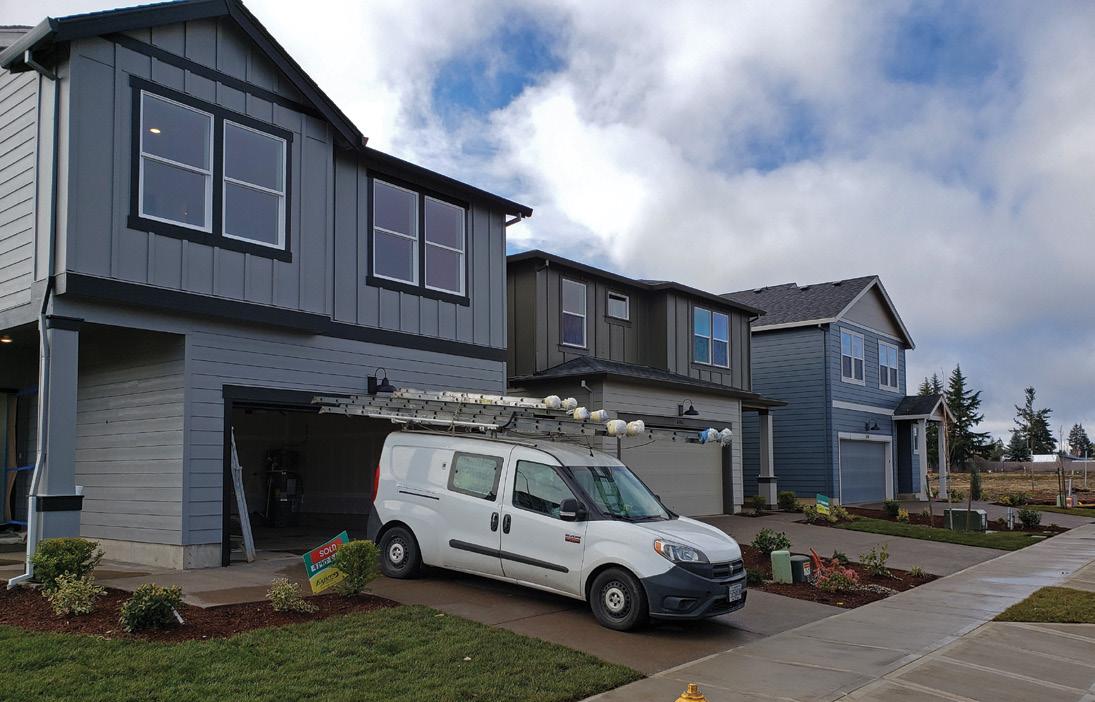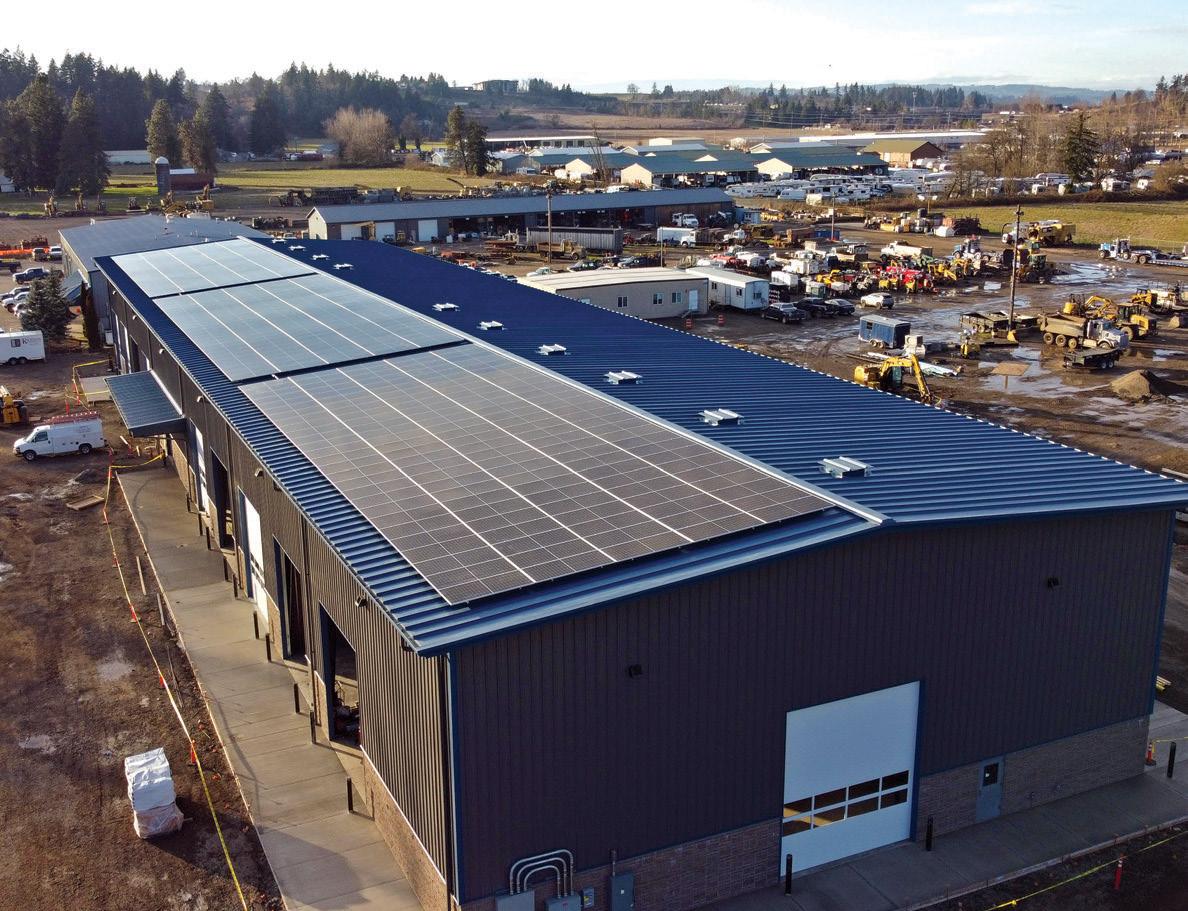
4 minute read
Housing Solutions? The numbers are stark; can the Legislature craft answers?
By James Day
Housing, housing and more housing. That’s all you seem to hear, both nationally and in Oregon. Housing costs too much, there isn’t enough of it – affordable or not – and higher interest rates mean fewer Oregonians would be eligible to qualify for a loan even if a house were available.
It’s a devil of a fix and one that will carve a huge slice out of the work time of the Oregon Legislature in the 2023 session, which is expected to last until late June.
How bad is the need? Economists estimate that Oregon is more than 100,000 housing units short of the current need. New Governor Tina Kotek’s first stab at the problem was to ask for an increase from an annual production of 22,000 units to 36,000 as well as provide $130 million to address homelessness.
How high are the rates? Nationally, mortgage rates reached a two-decade high of 7.08% for a 30-year- fixed loan in the fall before easing to about 6.73 in mid-March. Oregonians were facing the same harsh reality, with a 6.48% rate for the 30-year fixed. A year ago in March rates averaged 3.85% nationally.
All of these factors have trickle-down effects. The rate increase coupled with higher prices means that a homebuyer will face roughly a 49% higher monthly payment, year over year, on a median-priced home. And that higher payment translates to higher income levels being required to qualify for a loan. In the fourth quarter of last year a prospective homebuyer had to make at least $80,000 to afford a home at the national median price of $325,000. That’s a nearly 36% increase from the same quarter in 2021.
So what should the Legislature do? On March 15, the House passed House Bills 5019 and 2001 and sent them on to the Senate. The housing and homelessness package will address a narrow slice of the overall housing market, with its $200 million ($70 more than Kotek asked for) in funding aiming to get 1,200 homeless Oregonians off the streets within a year.
The first bills
Those in the building industry are hoping for broader and more aggressive actions, said Jodi Hack, chief executive officer of the Oregon Home Builders Association (HBA).
“It’s still early in the session but can I tell you the legislation they have passed so far – the “housing and homeless package” HB 2001 does not to solve the immediate housing crisis we are in,“ said Hack, who previously served in the Oregon House in District 19.
“The provisions around housing are based on holding local jurisdictions accountable for their needed housing supply analysis which we won’t begin to see any movement on for production for many years. It could be helpful long-term but does not address the problems we are in now nor does it help meet the governor’s goal of 36,000 units per year.”
HB 5009/2011 also includes $20 million toward the production of affordable modular homes and requires Oregon Housing and Community Services (OHCS) to update a publically available statewide housing production dashboard on an annual basis. The dashboard would includes updates on the progress toward housing production by affordability levels as well as other data.
Cities that fail to meet their building targets could face action from the state Department of Land Conservation and Development. Such actions, which would require a judge’s order, could include the forfeiture of grant funds or other state allocations.
Also, HB 2001 requires cities with more than 10,000 residents to identify how much housing is needed in their communities in the next two decades and then work to make the building process less cumbersome and litigious.
Hack said that actions at the city level in conjunction with Oregon’s strict land-use laws that date to the 1970s long have influenced housing production. Which agency, city or state, poses the bigger challenge?
“Tough one.” she said. “Right now I would say the cities are our biggest barrier to housing supply, not necessarily our land-use system.”
One of the key goals for the session for Hack and others in the building industry is House Bill 3469, the “Right to Housing Act,” which was still in a house committee at Chalkline’s presstime.
“The legislation,” Hack said, “would speed up the approval process, decrease costs due to arbitrary design standards and lower the risk of lawsuits attempting to block production. This act makes it clear that Oregonians have a right to an adequate supply of affordable housing in residential zones, and protects residential applications from arbitrary process, expensive design criteria, and risk of appeal.”
Hack and the HBA also are watching with interest the progress of HB 3414, which is designed to “help with accountability and increase opportunity. We look forward to seeing where that bill goes in the session as well.”
Commercial conversions

An intriguing piece of legislation in the legislative mix is HB 2984, which would require local governments to allow for the remodeling of commercial buildings for housing without needing a zone change or conditional use permit as long as the property already is inside the city’s urban growth boundary (UGB).


An experiment on the concept already is underway in Springfield, where a local developer purchased a 5,000-square-foot commercial building for $600,000. The developer plans to remodel the structure into 12 apartments.
According to Lane County Commissioner Dave Loveall, who testified before the Legislature in the first week of March on HB 2894, property taxes on the building, currently about $2,000 per year, would rise to approximately $14,000 per year once the apartments are built and occupied.

Loveall said that several similar buildings in downtown Springfield have been similarly converted and that “they have changed the city’s character.”
Loveall said that the innovation has led to new restaurants, outdoor picnic tables and retail stores and 34 new families living downtown in a walkable neighborhood.

HB 2984 also would limit the requirement that developers must provide parking for residents and require the housing, whether via renting or owning, to be aimed toward those earning up to 120% of the area’s median income. Systems development charges (SDCs), which builders are levied to pay for required public amenities such as streets, sidewalks, sewers and water infrastructure, parks and schools, also would be waived. Hack said she and the HBA like the concept but want the Legislature to be thinking more broadly on housing issues.

“While we support the conversion of commercial to residential, we believe this does not go far enough,” she said. “ It needs to include bare land (as well.”














